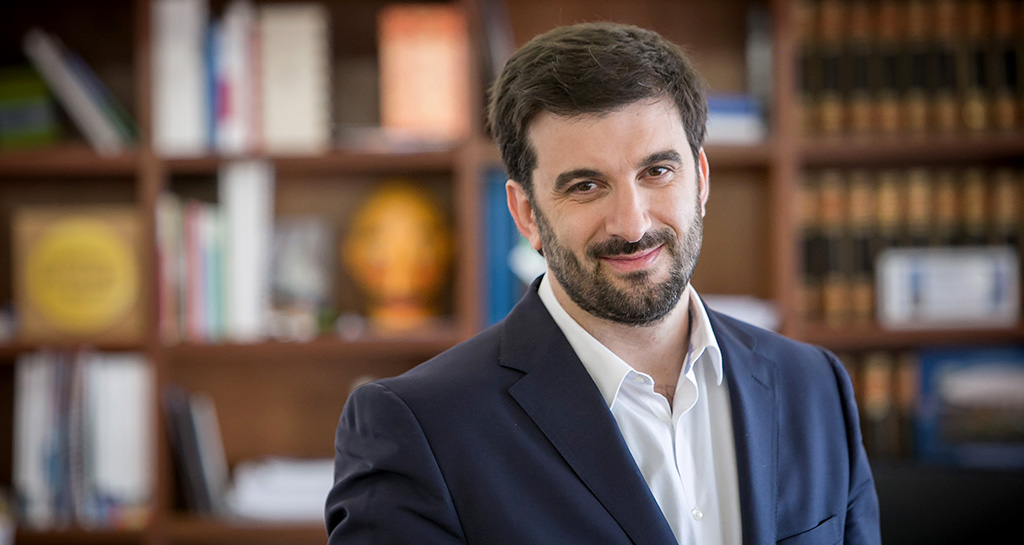Portuguese students at the Macau Polytechnic Institute increased 66.7%
The number of Portuguese students at the Polytechnic Institute of Macao (IPM) grew 66.7% in three years, an increase that still can not respond to demand, according to Lusa figures.
“We can see this trend”, the new director of the School of Languages and Translation (ESLT) of the IPM, Han Lili, pointing to the need for more “Portuguese language courses that enable the deepening of knowledge of the language and of the culture of Portuguese speaking countries “.

In 2017/2018 the number has risen to 350 due to “the start of the new Portuguese Degree Course and a further degree in Chinese-Portuguese translation,” she said. In this school year, Portuguese students are already around 500.
Han Lili, who took up the new duties on August 16, explained that one of the main reasons for the growth in the number of Portuguese students in this school year has to do with “the start of the new degree course in Chinese language teaching as foreign language”.
According to the website of the IPM, this course aims, among other things, to “enable professionals who master Chinese, Portuguese, English and Mandarin / Cantonese”
The number of available vacancies per year for Portuguese courses increased by 50% over the last two years, compared to the 2016/2017 school year. This year there were 150 places for 800 applications.
“In order to meet the growing demand for qualified bilingual (Chinese-Portuguese) talents by the market, IPM has made available a diversified offer of courses associated with learning Portuguese,” said the ESLT director.
Han Lili also said that new courses have been created, “namely the course of China-Lusophone business relations, undergraduate course in Chinese language teaching as a foreign language and the Portuguese course.”
“The centennial course of Chinese / Portuguese translation of the IPM continues to be the course with more applications,” he said.
This school “is a family of true cultural coexistence, with teachers and students of different cultural and linguistic backgrounds,” he said.
Students from Portuguese-speaking countries who are learning Chinese at IPM have also seen exponential growth: it has increased about three times in so many years.

In 2016/2017 there were 23 Portuguese-speaking students studying Chinese. In the school year that began in September this year this number increased to 70.
“We currently have three classrooms. A study year is planned in Beijing to improve their Chinese proficiency,” he said.
The number of Lusophone Chinese learners attending the ESLT annually increases by 25 students, a class of the Chinese-Portuguese translation course of the Polytechnic Institute of Leiria (IPL).
“These are mobility students who come mainly to improve Chinese and translation and interpretation skills,” explained Han Lili.
The director of the School of Education and Social Sciences (ESECS) of the Polytechnic Institute of Leiria, Sandrina Milhano, emphasized the importance of this “absolutely unique opportunity” for IPL students, who during “two years have contact with the language and Chinese culture, “an added value to” understand not only translation but also interpretation. ”
“Students spend two years in Portugal and two years in China,” one in Macau at IPM and another at the University of Language and Culture in Beijing, said Sandrina Milhano, adding that these partnerships involve reciprocity. About 35 IPM students are studying this year at the IPL.
The partnership does not extend only to the students, there are also exchange of teachers who will teach to the different institutes. “There is the sending of teachers from Macau to Leiria and from Leira to Macau and also from Beijing,” he said.
Sandrina Milhano added that there is “a set of established protocols that go back some 13 years”, between IPL and IPM, such as the publication of articles and textbooks together.
Han Lili also defended the development of “manuals intended for foreign students to learn Chinese as well as manuals for translation and interpretation” as one of their main stakes.
Finally, Sandrina Milhano pointed out that the demand for the translation course in the IPL has increased. This year about 116 people tried to enter the course, in phase 1, but only 25 succeeded.






